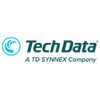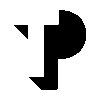3 BlackBag Jobs
Head - Research & Development - Aerospace Industry (15-20 yrs)
BlackBag
posted 5d ago
Job Description
About the Role:
- Are you an aerospace visionary with a passion for innovation? We're looking for a dynamic and results-driven Head of R&D to lead our cutting-edge research and development initiatives in the aerospace industry.
- As the head of a high-performance team, you'll drive technological breakthroughs that shape the future of aviation, defence, and aerospace systems.
- Your leadership will fuel the development of next-gen products and technologies that push the boundaries of what's possible.
Key Responsibilities:
- Lead & Innovate: Shape the future of aerospace by developing and executing a bold R&D strategy that aligns with the company's vision.
- Drive Technology: Spearhead the design, testing, and commercialization of advanced aerospace systems and technologies, from aircraft to propulsion and avionics.
- Collaborate: Work closely with cross-functional teams - engineering, manufacturing, quality assurance to ensure seamless integration of R&D outputs into final products.
- Manage Resources & Projects: Lead large-scale projects, optimize R&D resources, and ensure projects meet deadlines, budgets, and quality standards.
- Maintain Compliance: Oversee the development process to ensure all aerospace products meet stringent regulatory standards (e.g., FAA, EASA, AS9100).
- Mentor & Grow Talent: Build a high-performing, innovative R&D team, fostering a culture of collaboration and continuous learning.
Qualifications & Experience:
- Educational Background: Master's degree or higher in Aerospace Engineering, Mechanical Engineering, or a related field. A PhD is a plus.
- Experience: 15+ years in the aerospace or aviation industry, with at least 7 years in leadership roles driving R&D initiatives.
- Industry Expertise: Deep technical knowledge in aerospace systems, aerodynamics, propulsion, avionics, and advanced materials.
- Proven Track Record: Hands-on experience leading complex R&D projects and delivering cutting-edge technologies.
Critical Certifications:
- AS9100: Certification in Quality Management Systems for the Aerospace Industry.
- ISO 9001: Certified in Quality Management Systems, especially for organizations in the aerospace sector.
- FAA/EASA Certification: Understanding and hands-on experience with Federal Aviation Administration (FAA) or European Union Aviation Safety Agency (EASA) certification processes for aircraft and aerospace systems.
- Six Sigma or Lean Certification (Green Belt/Black Belt): Preferred for process improvement and efficiency in R&D projects.
- Project Management Professional (PMP): Certification for effective project management and resource planning.
Technical Skills:
- Expertise in aerospace systems design, simulation, and testing (aircraft, engines, avionics).
- Proficiency with CAD/CAE tools (e.g., CATIA, SolidWorks) and simulation software (MATLAB, Simulink).
- Strong understanding of industry standards and compliance (AS9100, ISO 9001, FAA, EASA).
- Experience with project management tools and resource planning.
Key Competencies:
- Leadership: A visionary leader with the ability to inspire teams, drive innovation, and deliver results.
- Collaboration: Strong interpersonal skills to engage with senior leadership, cross-functional teams, and external partners.
- Problem-Solving: Analytical mindset with a passion for solving complex aerospace challenges.
- Results-Driven: A strategic thinker who thrives in a fast-paced environment and delivers high-impact results.
- Cultural Fit: A collaborative, solution-oriented approach to leadership, with a commitment to creating a positive and innovative work culture.
Technical Expertise:
Aerospace Engineering Knowledge:
Pipe Assemblies, Hydraulics and Pneumatics systems, Fuel & Other Fluid Components like Fittings, Valves, Hoses. propulsion, and space systems.
Manufacturing Process Knowledge:
- Well, verged with various manufacturing process like Aerospace machining, Tube fabrication and associates special process like forging, tube fabrication, plating/coating etc.
Regulatory Compliance:
- Understanding of aerospace industry standards and regulations (e.g., FAA, EASA, ISO 9100, NADCAP, ITAR, EAR, CEMILAC).
Risk Assessment:
- Ability to identify and mitigate technical risks throughout the lifecycle of the program.
Innovation:
- Proficiency in designing and analysing hydraulic systems for aerospace applications (e.g., landing gear, flight control actuators, braking systems).
- Understanding fluid dynamics, hydraulic power generation, and system efficiency.
Component Design:
- Expertise in the design of hydraulic components such as fittings, valves, pipes, hoses, filters, and reservoirs. Knowledge of materials selection for aerospace-grade components (e.g., lightweight alloys, composites).
System Modeling & Simulation:
- Experience with modelling tools like MATLAB/Simulink, AMESim, or similar platforms for hydraulic system simulation and analysis. Ability to analyse dynamic performance, stability, and load-bearing capacities of hydraulic systems.
Failure Analysis & Reliability:
- Skills in root cause analysis, fault detection, and reliability improvement for hydraulic systems. Familiarity with FMEA, FTA, and reliability prediction methods.
- Engineering Tools & Software
CAD Tools:
- Proficiency in 3D design and drafting tools such as CATIA, SolidWorks, AutoCAD, or Siemens NX for hydraulic system and component design.
CFD and FEA Tools:
- Ability to perform Computational Fluid Dynamics (CFD) analysis using tools like ANSYS Fluent.
System Design Documentation:
- Experience in preparing technical documentation, engineering drawings, and maintenance manuals.
Change Management:
- Navigate changes in scope, schedule, or technical requirements effectively.
Risk Management:
- Proactively identify, analyze, and manage project risks.
Lifecycle Management:
- Understanding the complete product lifecycle, from conceptual design to manufacturing, testing, and maintenance.
Testing & Certification:
- Experience in prototype testing, qualification testing (e.g., vibration, endurance, and pressure tests), and certification processes.
Product Costing:
- Cost Estimation Parametric and Analytical Estimation Proficiency in using parametric, bottom-up, and top-down cost estimation methods.
- Ability to break down complex systems into manageable components for accurate cost modelling.
Functional Areas: Software/Testing/Networking
Read full job description What people at BlackBag are saying
What BlackBag employees are saying about work life
Similar Jobs for you
Business Leader - Engineering Services-In Country Practice (15-20 yrs)
15-20 Yrs
































